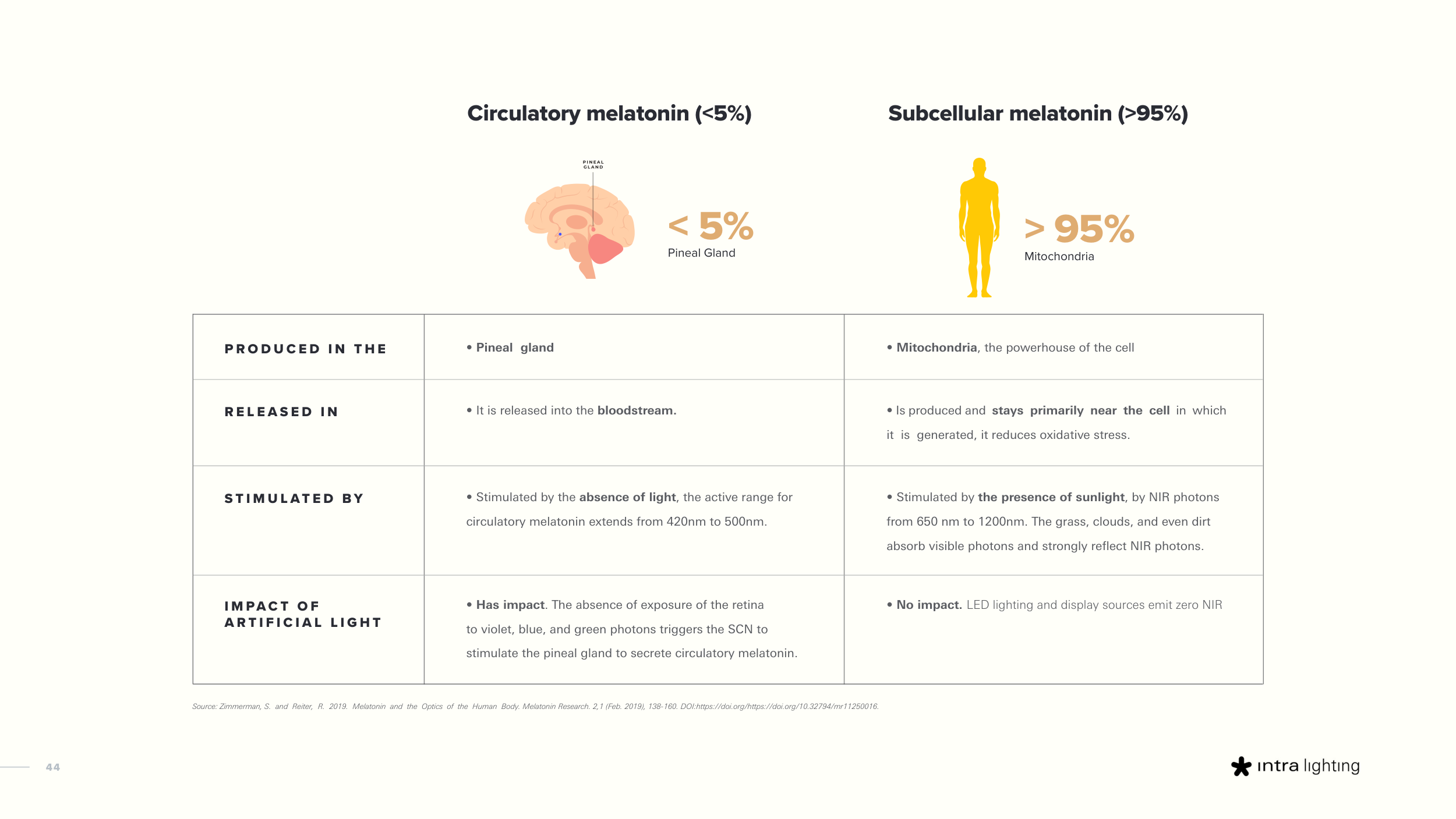44
Source: Zimmerman, S. and Reiter, R. 2019. Melatonin and the Optics of the Human Body. Melatonin Research. 2,1 (Feb. 2019), 138-160. DOI:https://doi.org/https://doi.org/10.32794/mr11250016.
• Pineal gland
• Mitochondria, the powerhouse of the cell
• It is released into the bloodstream.
• Is produced and stays primarily near the cell in which
it is generated, it reduces oxidative stress.
• Stimulated by the absence of light, the active range for
circulatory melatonin extends from 420nm to 500nm.
• Stimulated by the presence of sunlight, by NIR photons
from 650 nm to 1200nm. The grass, clouds, and even dirt
absorb visible photons and strongly reflect NIR photons.
• Has impact. The absence of exposure of the retina
to violet, blue, and green photons triggers the SCN to
stimulate the pineal gland to secrete circulatory melatonin.
• No impact. LED lighting and display sources emit zero NIR
P R O D U C E D I N T H E
R E L E A S E D I N
S T I M U L AT E D B Y
I M PA C T O F
A R T I F I C I A L L I G H T
< 5%
Pineal Gland
P I N E A L
G L A N D
> 95%
Mitochondria
Circulatory melatonin (<5%)
Subcellular melatonin (>95%)
L I G H T & W E L L - B E I N G
01
02
03
04


